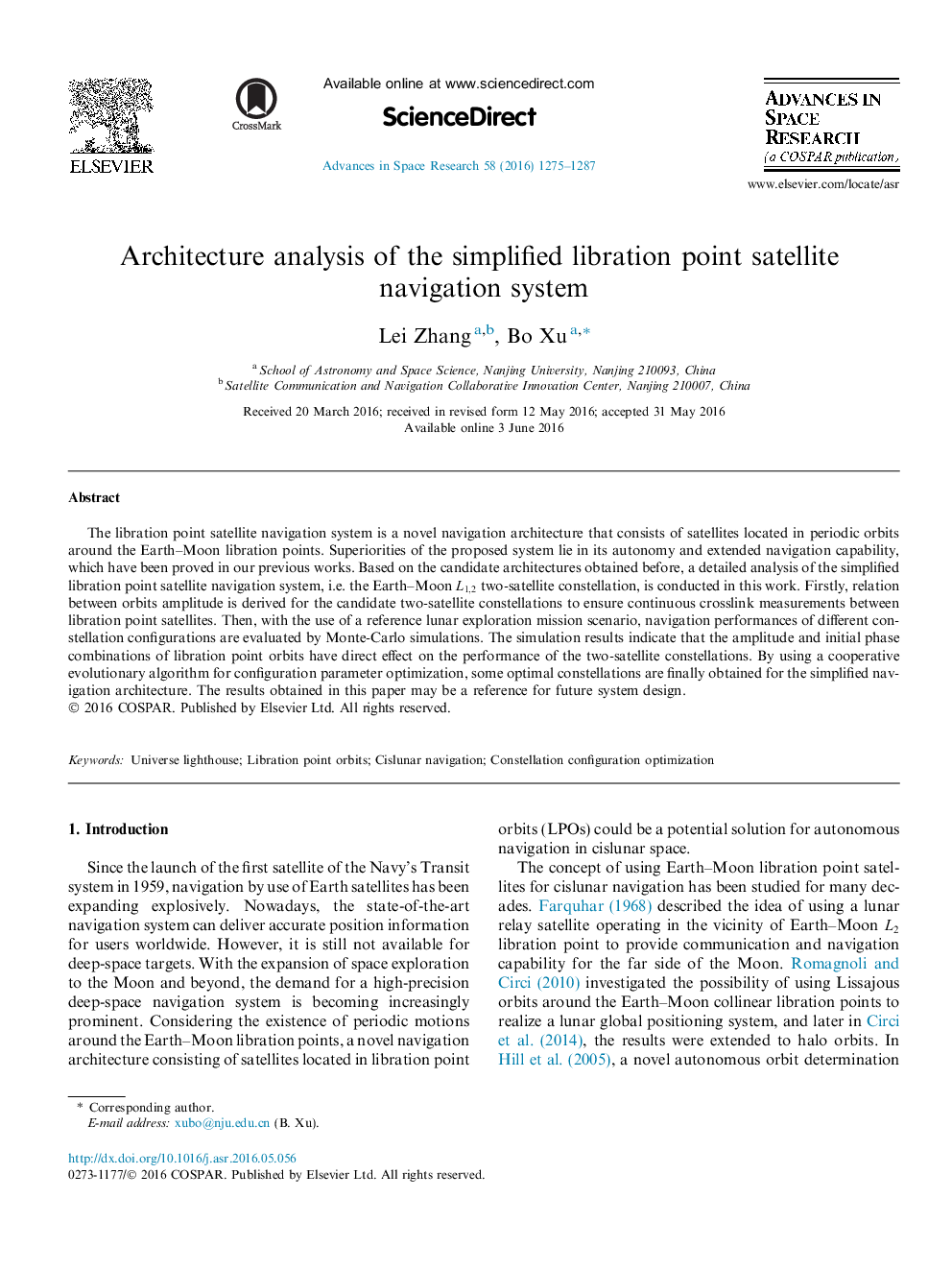| Article ID | Journal | Published Year | Pages | File Type |
|---|---|---|---|---|
| 1763182 | Advances in Space Research | 2016 | 13 Pages |
Abstract
The libration point satellite navigation system is a novel navigation architecture that consists of satellites located in periodic orbits around the Earth-Moon libration points. Superiorities of the proposed system lie in its autonomy and extended navigation capability, which have been proved in our previous works. Based on the candidate architectures obtained before, a detailed analysis of the simplified libration point satellite navigation system, i.e. the Earth-Moon L1,2 two-satellite constellation, is conducted in this work. Firstly, relation between orbits amplitude is derived for the candidate two-satellite constellations to ensure continuous crosslink measurements between libration point satellites. Then, with the use of a reference lunar exploration mission scenario, navigation performances of different constellation configurations are evaluated by Monte-Carlo simulations. The simulation results indicate that the amplitude and initial phase combinations of libration point orbits have direct effect on the performance of the two-satellite constellations. By using a cooperative evolutionary algorithm for configuration parameter optimization, some optimal constellations are finally obtained for the simplified navigation architecture. The results obtained in this paper may be a reference for future system design.
Keywords
Related Topics
Physical Sciences and Engineering
Earth and Planetary Sciences
Space and Planetary Science
Authors
Lei Zhang, Bo Xu,
